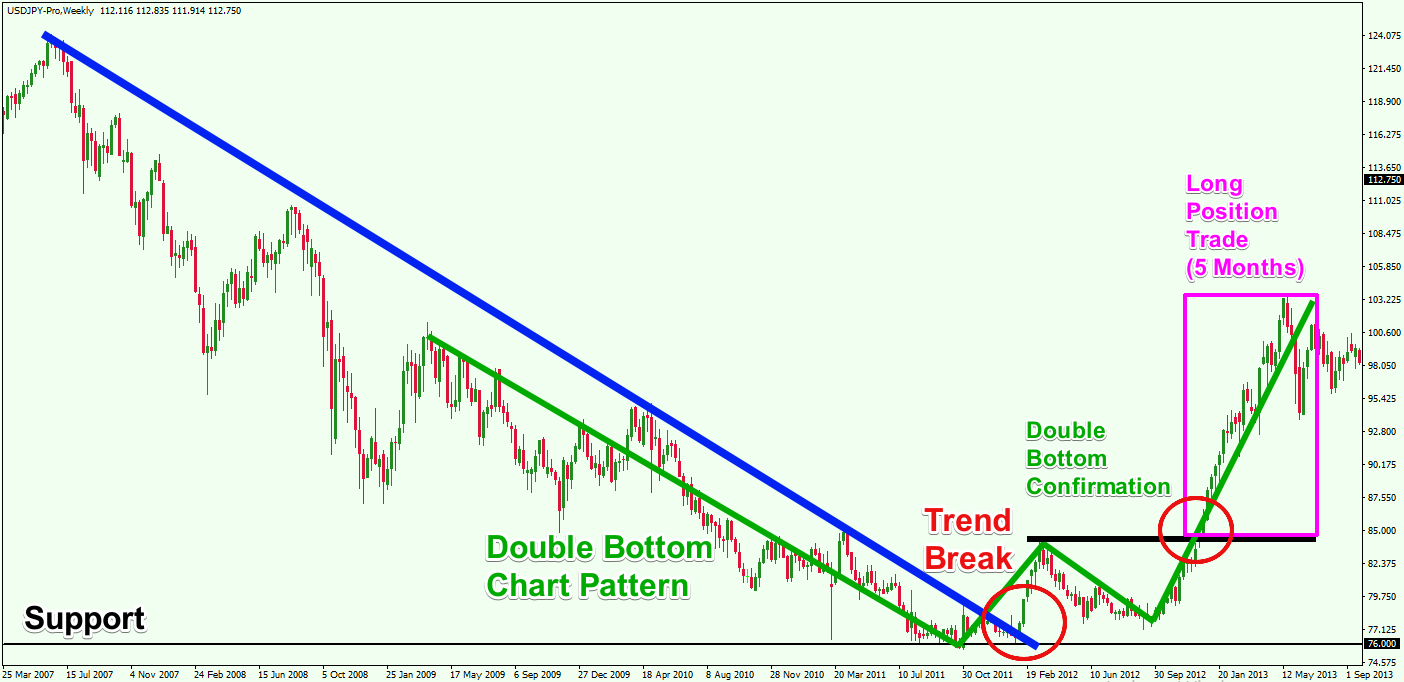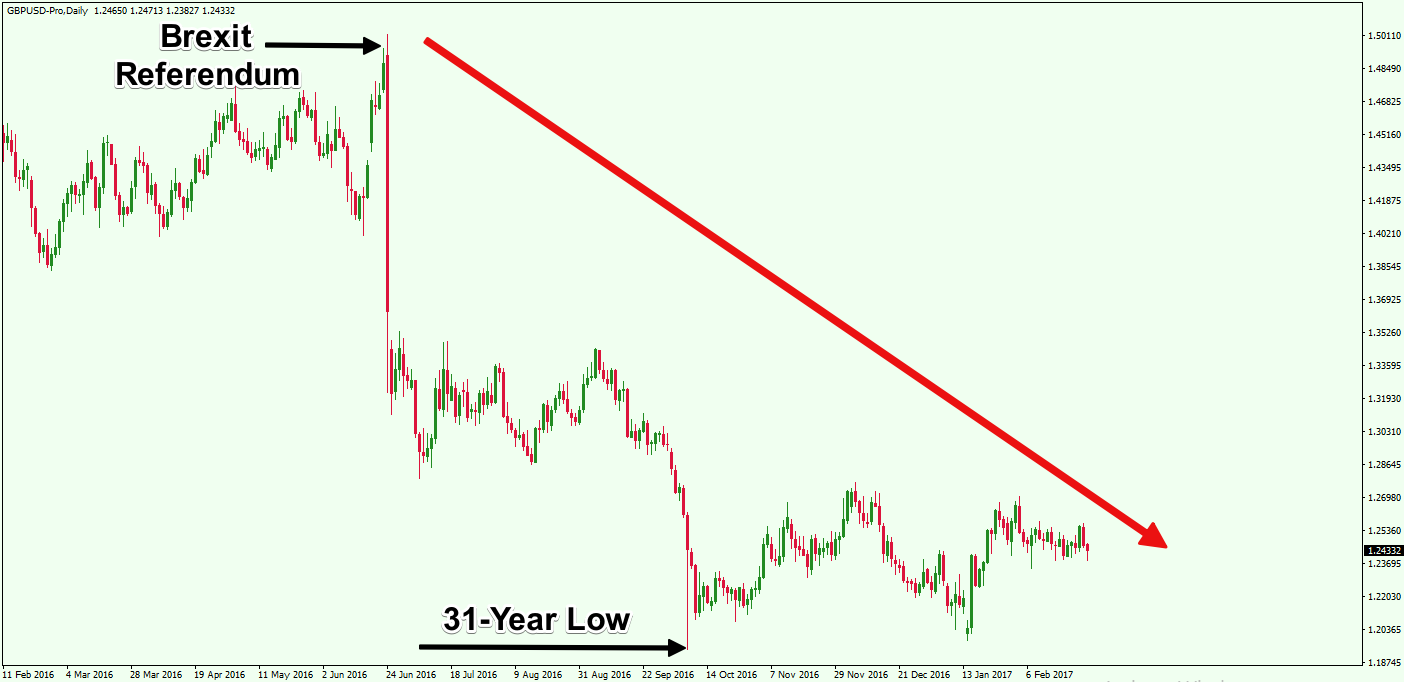Position trading is a speculative or investing style where a trader is most interested in longer term price moves in the market. Position traders typically take only a handful of major positions over the course of a year, however, they can and do trade around those positions in an active way from time to time. A position trader seeks opportunities that can last from a few months to a year or longer.
Since these types of trades last for a longer period of time, the position trading strategy requires an in-depth knowledge of fundamental factors that can influence prices over the long term, as well as knowledge of technical timing models to be able to get in and out of positions at the most opportune times within the longer market cycle.
So, most successful position traders are well versed in macro-economic data and typically look to initiate a trade based on their fundamental outlook, and then use technical studies to help time their trades.
A position trader is evaluating multi-month or multi-year trends that are currently present or are emerging. Unlike more active day and swing traders, most position traders would like nothing more than to sit tight and ride a major market trend for as long as possible. Generally speaking, many Hedge funds and professional CTAs ( Commodity Trading Advisors) tend to be position traders, while most novice retail traders tend to gravitate towards the shorter-term day trading time horizon.
Key support and resistance levels on the daily and weekly charts hold a lot of value. This is because the well-capitalized bigger picture players mentioned earlier tend to concentrate their analysis on these higher time frame charts. As a result, there is increased order flow activity around important daily and weekly S/R zones.
Technical analysis can be an important component for successfully timing a longer-term position trade. Price action analysis tends to be more reliable on longer term charts which is an added plus for a Position trader. Let’s now discuss a few valuable indicators and tools that can help you spot long term position trading opportunities.
A simple but highly effective trading tool that can assist in trading around a core position is the trend line. As we have noted earlier, price action and trends tend to be clearer on longer time frame charts such as the daily the weekly. As such, applying a trend line study can provide us with valuable insight into the market and offer us a directional bias based on prevailing price action.
Horizontal Support and resistance levels are also highly relevant for position trading. When the price action breaks a major support or resistance on the chart, this is likely to cause an advance to the next higher resistance level in case of an upside break or a decline to the next lower support level in case of a downside break.
On the contrary, if the price action fails to break a key level and instead bounces in the opposite direction, we can then consider this as a possible price rejection and position ourselves for a corrective move or new trend in the opposite direction.
Another technical tool that can assist the position trader is the Moving Average indicator. The moving average type could be a simple, exponential, volume weighted, displaced, etc. That really doesn’t matter too much in the overall scheme of things. What can matter, however, is the number of periods of the longer term moving average that you utilize.
Longer term price action tends to react regularly to the 50 and 200 period moving averages. But you should also keep an eye on the 100 period and even the 500-period moving average for additional clues.
Above you see an example of a position trade on the weekly USD/JPY chart. After the pair breaks a major bearish trend, a Double Bottom chart pattern is created and confirmed, creating a solid long opportunity on the chart. After the breakout, the USD/JPY traded in the bullish direction for the next five months, making gains of approximately of 20%.
Some traders may feel that a 20% move over a five-month period is not a substantial move or highly profitable. Well if you feel that way, you may not be considering that we are looking at a 20% move on an unleveraged position. If you were to capture even two-thirds of such a move, that would equate to about 70% on 5:1 leverage utilization, or 140% on 10:1 leverage utilization.
And what’s more, your transactional costs in the form of bid ask spreads and commission would be negligible as a percentage of that profit. Compare that to day traders, who knowingly or unknowingly, give up almost half or more of their gross profits in the form of transactional costs.
As we have alluded to earlier, the most powerful position trading strategiescombine both a fundamental outlook with technical market timing. A position trader will routinely analyze macro-economic data of major countries that are represented by their respective currency pairs. Let’s now have a discussion and point out some important economic indicators that should be considered in context with long term position trading.
The inflation rate in a country or region can have an impact on its currency exchange rate. High inflation essentially means that the price for goods and services in a country are increasing. This creates less demand for goods and services from that country and can be indicative of an unhealthy economy. As a result, the currency exchange can drop in value versus other more relatively stable currencies.
Low to moderate inflation indicates that prices in a country are competitive. This can result in higher demand for the goods and services produced in this country. This creates demand for the currency, which could lead to an increase in value relative to other currencies.
Each central bank has a target inflation rate that they watch closely in order to achieve optimal economic growth and employment. For example, the Federal Open Market Committee (FOMC) within the United States has a target inflation rate of 2 percent per year. The ECB (European Central Bank) aims for an inflation rate just under 2 percent per year as its mandate over the medium term.
Central banks manage interest rates in an effort to keep their domestic economy competitive and running smoothly . Since interest rates, inflation, and currency exchange rates are inter-related, monetary policy makers are tasked with trying to keep these three economic drivers in harmony with each other. This is always a balancing act.
For example, higher interest rates are likely to increase interest in foreign direct investments, which should boost the demand and value of a domestic currency. When rates are relatively high, global institutional investors seeking attractive interest rates can start pouring money into that country. However, high interest rates can result in higher inflation; as an economy begins to heat up, this can make the goods and services from that country more expensive, and thus less competitive in the global environment.
Lower interest rates tend to reduce foreign direct investments in the country, making deposits less attractive. In this relationship, investors reduce their capital exposure and investments within this country, which decreases the demand for the domestic currency. This can result in a drop in the exchange rate. Lower rates also stimulate deflation in the country, which may lead to economic stagnation or even a recession.
In simple terms, the trade balance of a country expresses the difference between the monetary value of gross imports vs the monetary value of gross exports.
If a country has a negative trade balance, it means that it imports are more than it exports, which creates a trade deficit. This trade deficit is usually repaid with credit from external lenders, which can cause a depreciation in the value of the exchange rate.
If a country has a positive trade balance, this means that its exports are more than it imports. This is typically viewed as a healthy situation for the overall state of a particular economy.
The economic performance of a country is an important factor when deciding whether to invest in its currency over a prolonged period. If an economy is not stable, this could result in political and social instability in the country. This potential risk provides an unattractive environment from a foreign investment standpoint.
On the other hand, stable economies provide attractive investing opportunities for foreign investments, which leads to a demand for the domestic currency, and a likely appreciation in value.
An example of a country that was faced with major political challenges and social uncertainties in recent times is the UK when they voted out of the European Union. The Brexit referendum divided the UK society into two sides – those that supported Brexit and those against Brexit. The political and social atmosphere was intense as there were strong views on both sides.
After the Brexit Referendum, the Pound Sterling dropped to a 31-year low versus the US Dollar:
This is the Daily chart of the GBP/USD showing the Sterling price decline after the Brexit referendum. As a result of the Brexit vote out of the European Union, many investors initially lost faith in the Pound and began to look for other currencies and asset classes such as gold and commodities to invest their money.
The Pound eventually began a slow but steady rebound against the dollar to end strongly for 2017. It is important to realize that investor sentiment can change fairly quickly and it is the Position Trader’s job to gauge this and align themselves with the most probable scenario for the future.








Post a Comment